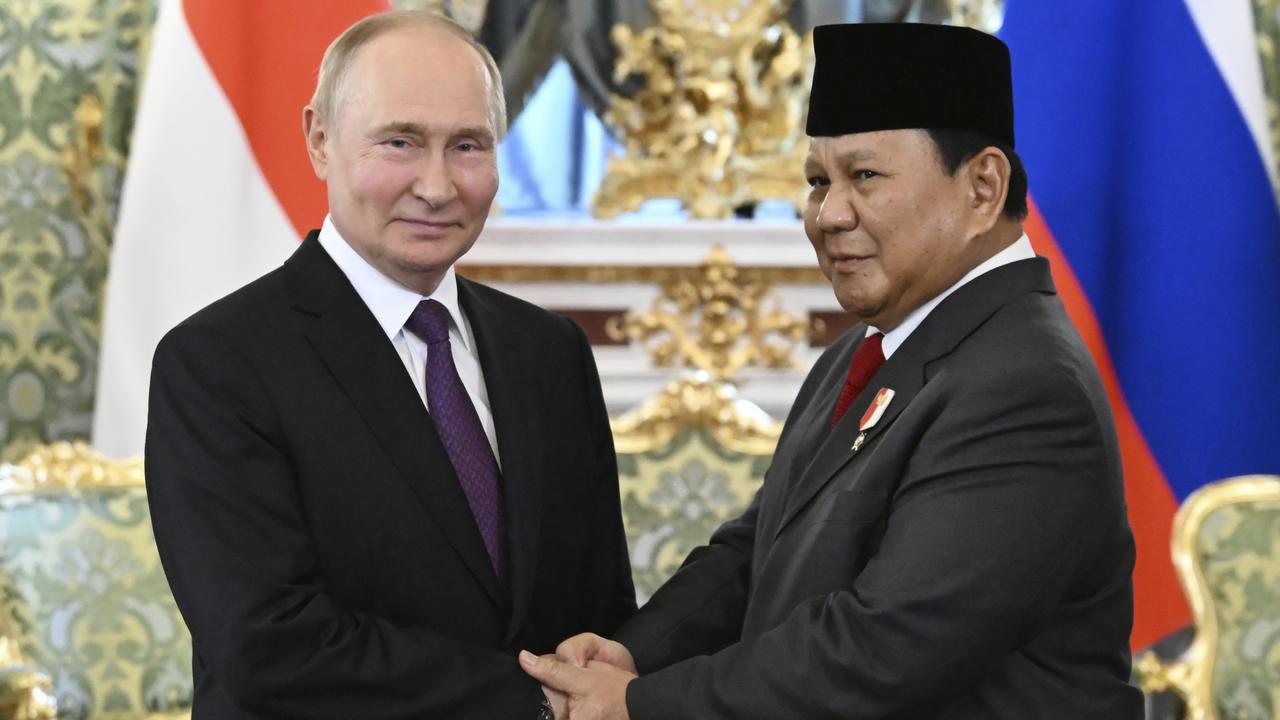Fast track for underwater Defence drone as Conroy vows to accelerate delivery
Newly promoted cabinet minister Pat Conroy says he will use the authority that comes with the role to accelerate the delivery of new weapons and equipment for the nation’s ‘warfighters’.

Newly promoted cabinet minister Pat Conroy says he will use the authority that comes with the role to accelerate the delivery of new weapons and equipment for the nation’s “warfighters”, including unmanned systems that would previously have languished on Defence’s wishlist.
In his first announcement since his promotion, the Defence Industry Minister – who has been handed the additional responsibility for “capability delivery” – will approve a new production centre for the Ghost Shark underwater drone program under a $40m investment to fast track its first operational model by next year.
Mr Conroy said this was “light speed” progress for a capability that began as a conversation with tech company Anduril in 2022, and similar headway was being made on nuclear submarines and a program to produce guided missiles in Australia.
Former chief of army Peter Leahy has warned Australia has become a “strategic liability” to the US, arguing that the nation’s military is “stretched too thin” and unprepared to fight at short notice.
But Mr Conroy said the government was responding to growing strategic threats, allocating a “massive” $50bn on new capabilities over the decade, and compressing delivery timeframes.
He said his No. 1 priority in the role was speeding up the Defence procurement process, piling pressure on bureaucrats to pursue “minimum viable capability” ahead of perfect solutions, as the government’s Defence Strategic Review recommended.
“Getting capability into the warfighters’ hands has to be the No. 1 priority of the person in my role and I think my new title makes it even clearer,” Mr Conroy told The Weekend Australian.

The leading Labor Left figure and confidant of Anthony Albanese dismissed critics who claimed he was now responsible for the lion’s share of the Defence portfolio, leaving Defence Minister and Deputy Prime Minister Richard Marles to gladhand foreign counterparts.
Mr Conroy, who is also Minister for International Development and the Pacific, said Mr Marles had oversight of the entire Defence portfolio, including its $58bn budget, and ridiculed claims his expanded role was a recipe for tensions with his senior colleague.
“There’s never been a more united defence ministerial team,” he said. “Unlike previous occupants of these positions, Richard and I work incredibly closely together.”
While Mr Marles previously expressed frustration with the Defence Department, declaring it had “a long way to go” before it could claim to have a “culture of excellence”, Mr Conroy said the bureaucracy was on board with the government’s agenda.
“They are critical to us delivering on my priorities, which are accelerated delivery of capability and building the Australian defence industry,” he said.
“And we’ve made no secret of the fact that we’ve been rebuilding capability within the department as a result of it being rundown for 10 years by the last government.”
While investments in new missile defence batteries had been deferred, he said the government was “monitoring the technology” and was working on a “critical” program to establish the brains of an integrated air and missile defence system.
Mr Conroy, who has announced several small drone programs acquisitions in recent months, said unmanned systems were key to the government’s Defence plans, and it was determined to get platforms into service “that had just been circling around in the research space”.

He confirmed the government was prioritising the development of $800m Ghost Bat drone as an “intelligence, surveillance and reconnaissance” capability, as revealed by The Australian.
But he said the autonomous Boeing-designed aircraft could be developed as an armed capability.
The $140m Ghost Shark program was the poster child for the government’s investments in undersea warfare, Mr Conroy said, revealing the government had allocated an additional $20m that would be matched by Anduril.
The funding will go towards an export-ready centre at a yet-to-be disclosed location to produce the “extra-large long-range autonomous vehicles” for Australia and international partners, as well as a commercial version of the drone.
“We made it very clear that Ghost Shark has a strike role, not just intelligence, surveillance and reconnaissance,” Mr Conroy said, but refused to comment further on what weapons it would carry.
“The first production variant on the Ghost Shark will be available late next year. That’s not a prototype, that’s the first production variant.”
He said rapid progress was also being made on the government’s plans to manufacture guided weapons, with GMLRS precision rockets to enter domestic production next year.

He contrasted Labor’s progress with that of the Coalition, saying the only thing the former government produced on its sovereign guided weapons manufacturing plan was “two media releases”.
“The last government was talking about manufacturing missiles in the early 2030s. I’ve signed a contract with Lockheed Martin … to begin producing GMLRS missiles next year,” Mr Conroy said.
He said the government’s acquisition of 11 general purpose frigates, with the first to enter service by the end of the decade, would be “the fastest procurement of a major naval platform in the history of this country”.
And despite concerns over AUKUS’s multi-decade timeframe, Mr Conroy said the government had accelerated the timeline for the delivery of Australia’s first nuclear submarine by about 10 years on what was previously planned.
“Everyone seems to think it’s a long way off, but we’re talking less than a decade before we received our first nuclear powered submarine,” he said.
While the first of the nation’s troubled Hunter-class frigates is still at least eight years away from being delivered, Mr Conroy said he was confident the program had now turned a corner.
“I think the Hunter-class has suffered from timelines and promises of the last government made that were clearly undeliverable,” he said.
“But I’m confident that once they’re delivered, they will be the best anti-submarine warfare frigate in the world.”




To join the conversation, please log in. Don't have an account? Register
Join the conversation, you are commenting as Logout